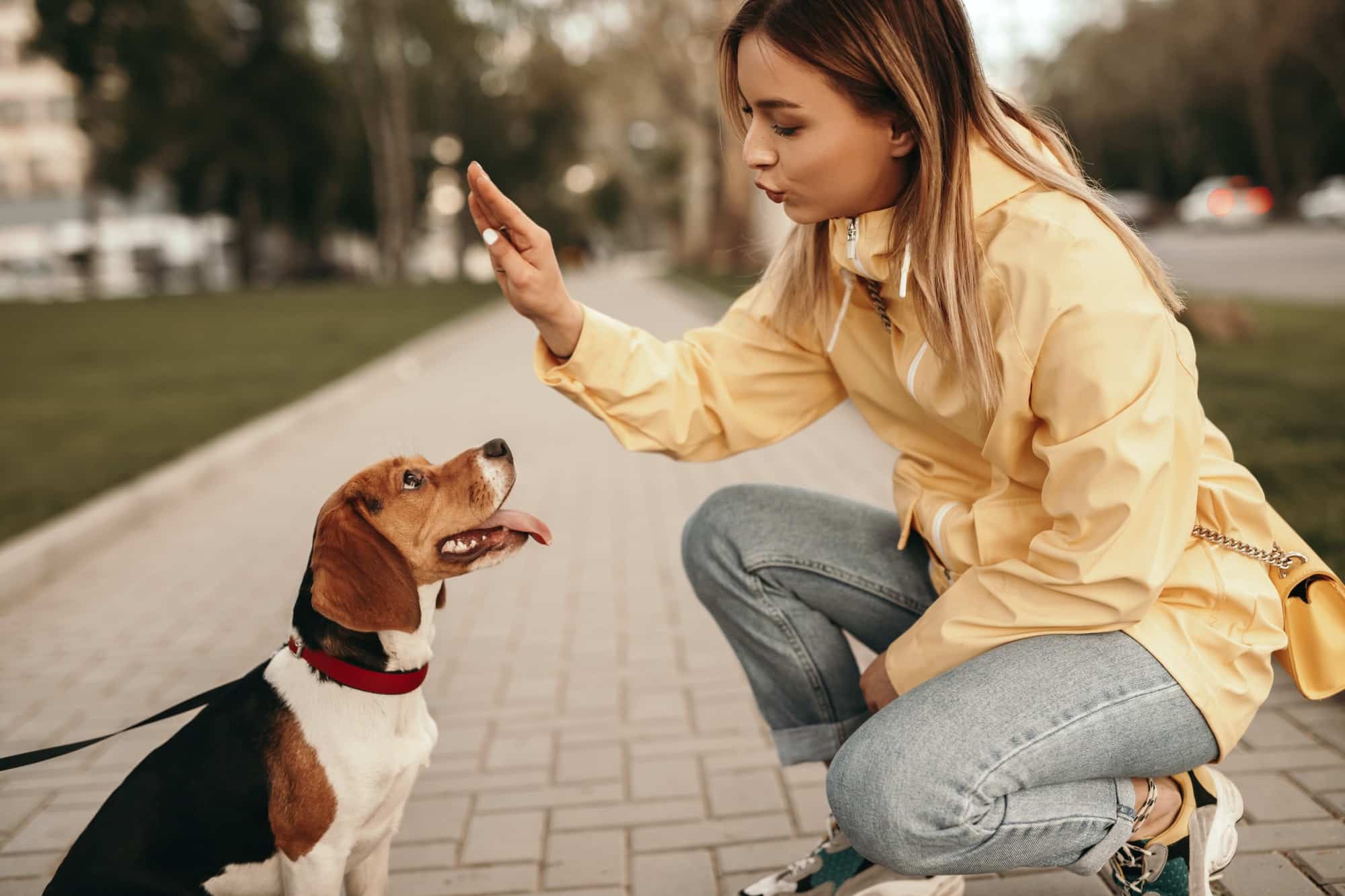How to Teach Your Dog to Safely Play with Smaller Dogs?

When it comes to the wonderful world of our canine companions, playtime is not just about fun and frolic. It’s an important aspect of their well-being and a crucial part of their social behavior. However, one common challenge that many dog owners face is teaching their dogs how to safely interact and play with smaller dogs. In this comprehensive guide, we will provide you insights and practical tips on how to ensure your pet learns to play safely with their smaller counterparts.
Understanding Your Dog’s Behavior
Before you start training your dog, it’s important to understand their behavior. Dogs, like humans, have unique personalities and ways of expressing themselves. Despite their size, some dogs may be shy or timid, while others may be outgoing and assertive. Knowing your dog’s behavior will help tailor your training approach effectively.
Lire également : What’s the Most Effective Method for Training Cats to Use a Scratching Post?
Socialization is a key aspect of dog behavior. It refers to the process of preparing a dog to interact and communicate safely and comfortably with other animals, people, and their surroundings. A well-socialized dog is typically more confident and less likely to exhibit aggressive or fearful behavior.
When it comes to playing, dogs have their own language. Sniffs, tail wags, barks, and body positions are all part of a complex system of canine communication. Understanding these signals will allow you to better comprehend your dog’s intentions and responses.
Dans le meme genre : What’s the Best Flooring Material for a Home with Multiple Large Dogs?
Learning to Play Safe: Training Your Dog
Now that you understand your dog’s behavior better, let’s delve into how you can train them to play safely with smaller dogs.
Training a dog requires time, patience, and consistency. It’s not something that happens overnight, and it’s important to remain patient and persistent throughout the process. Start by introducing your dog to different breeds and sizes of dogs in controlled environments to expose them to a variety of social situations.
A crucial step in the training process is teaching your dog to respond to basic commands such as ‘sit’, ‘stay’, ‘come’, ‘no’, and ‘leave it’. These commands will help you maintain control over your dog’s actions and prevent them from becoming overly excited or aggressive.
Remember, it’s important to always supervise play sessions. If you notice your dog displaying any signs of aggression or overpowering behavior, step in immediately and calmly remove your dog from the situation.
Using Toys and Play Tools
Toys can be effective tools to help teach your dog how to play safely. They can ease tension and provide a distraction if the play starts to get too rough. However, it’s important to choose toys appropriate for your dog’s size and strength.
When using toys, make sure to establish a set of rules. Teach your dog that they must wait for the toy to be thrown before they chase after it. This will help them understand that they have to control their excitement and aggression.
Toys can also be used to redirect your dog’s energy and focus. If your dog begins to play too roughly with a smaller dog, you can use a toy to divert their attention and lessen the intensity of their play.
Dealing with Aggressive Behavior
Despite your best training efforts, there may be times when your dog displays aggressive behavior towards smaller dogs. It’s essential to know how to handle these situations effectively.
Firstly, never punish your dog for aggressive behavior. Instead, remove them from the situation and try to understand what triggered their aggression. It might be fear, dominance, or possessiveness over food or toys. Once you identify the trigger, you can work on addressing it through training.
If your dog’s aggressive behavior continues, consider seeking professional help. Dog trainers and behaviorists are equipped with the knowledge and skills to handle behavioral issues and can provide strategies and techniques that you may not be aware of.
In summary, teaching your dog to safely play with smaller dogs requires understanding their behavior, consistent training, and knowing how to handle aggressive behavior. Always remember, your dog looks up to you for guidance, so it’s crucial to lead by example and demonstrate the kind of behavior you want them to emulate.
Navigating the Dog Park: How to Train Your Pup
Dog parks are a great place to socialize your dog and expose them to different types and sizes of dogs. However, it might be a challenging environment for your pup, especially if they are not used to playing with small dogs. Here’s how you can navigate the dog park and teach your dog to safely play with their smaller counterparts.
Upon entering the dog park, keep your dog on a leash initially and observe how they react to the environment. Look for signs of fear or aggression and try to understand their body language. If your dog seems relaxed and curious, then it’s a good sign.
Next, introduce your dog to smaller dogs gradually. Don’t force interactions. If smaller dogs approach, watch your dog’s response. If they appear comfortable, reward their behavior by giving them a treat or praise.
In case your dog ignores other dogs, it’s okay. They might just need more time to adjust. However, if they exhibit aggressive behavior, remove them from the situation immediately.
As you progress, let your dog off the leash but stay close by. Give them the freedom to explore and play but intervene if you notice any signs of aggression or overpowering behavior. Remember, your presence is crucial in the dog park as you are there to guide and correct your dog’s behavior.
Seeking Professional Help: Role of Dog Trainers
If you’re having difficulties teaching your dog to safely play with smaller dogs despite your best efforts, it might be time to consider seeking help from professional dog trainers.
Dog trainers have specialized knowledge and experience in handling a variety of behavioral issues. They can provide insight into your dog’s behavior and offer customized training strategies to address specific issues.
Engaging a dog trainer doesn’t mean you’ve failed as a pet parent. On the contrary, it shows your commitment to providing the best for your dog. It’s also an opportunity for you to learn more about dog behavior, which can help in strengthening your bond with your pup.
Dog trainers can work with you and your dog either in group classes or one-on-one sessions. They can help your dog become more comfortable around small dogs and teach them to play gently and respectfully.
In addition to working with a trainer, you might also consider enrolling your dog in obedience classes or daycare, where they can interact with other dogs under the supervision of trained staff.
Conclusion
In the journey to teach your dog to play safely with smaller dogs, remember that it’s not merely about regulating their play behavior. It’s about understanding their individual personality and communication style, being consistent in your training approach, and prioritizing their comfort and well-being.
In cases where you encounter challenges, don’t hesitate to seek professional guidance. Dog trainers and behaviorists can provide invaluable expertise and support.
Lastly, always remember that every dog, regardless of size, has the capacity to learn and grow. With patience, understanding, and love, teaching your dog to play with smaller dogs can be a rewarding experience for both of you.
